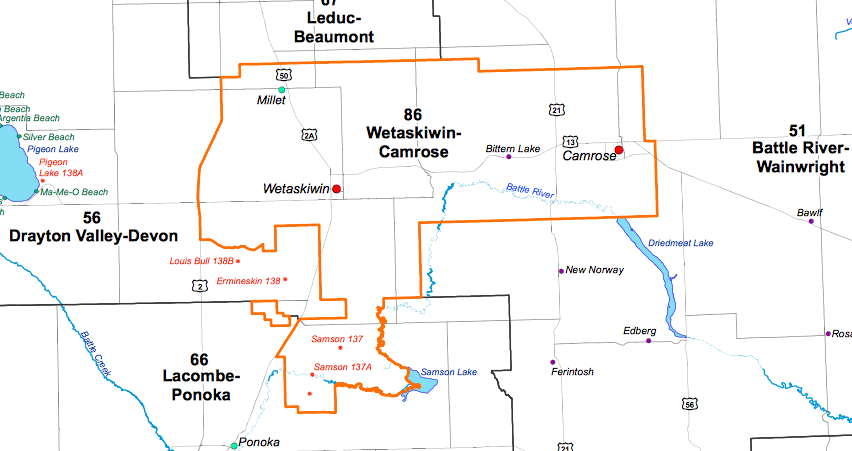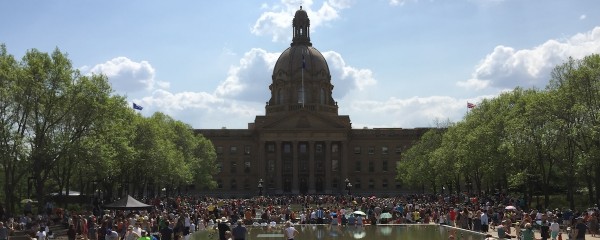Earlier this year I submitted a series of recommendations to Alberta’s Electoral Boundaries Commission, the appointed body tasked with redrawing Alberta’s provincial electoral districts for the next election. I initially meant to share this after I submitted it, but for no particular reason I never got around to posting them. The commission will scheduled to submit its interim report to the Legislative Assembly on May 31, 2017 and, after another round of public hearings, it will submit its final report on October 31, 2017.
Here are the recommendations I submitted to the commission in February 2017:
Population in each district
The previous Commission did a good job keeping the population of most electoral districts within ten percent of the provincial average population per electoral district. But some districts have become outliers as populations grow or decline, which creates a system of unequal representation in the Legislative Assembly.
According to Statistics Canada 2016 Census data made available on Feb. 8, 2017, there has been tremendous growth in Alberta’s urban areas, including the Edmonton region, Calgary region and the Red Deer corridor which spans the length between the province’s two largest cities. Communities like Airdrie and Cochrane have seen significant growth of more than 40 percent since the last census. Because of this, it would be appropriate to redistribute new districts into these regions of the province.
The census data also shows a decline in population in areas west of the Red Deer corridor and in east central Alberta. It would be appropriate to redistribute the boundaries of these districts to reflect this population decline.
I recommend that the commission attempt to keep districts within ten percent, but ideally within five percent, above or below the provincial average population per electoral district.
Special districts
I would prefer that no district fall below twenty-five percent of the average, as increased funding should be allocated to MLAs in geographically larger rural ridings for additional offices, staff and travel costs. But political necessity will likely lead to the existence of one or two of these special exceptions.
I recommend that if special districts are required, that be created only in extreme circumstances and be kept to a minimum number.
Naming districts
In the past there has been little or no guidelines for the Commission to name electoral districts. Some districts are named after geographical locations and some after prominent figures from Alberta’s political history.
I recommend that the Commission or the Legislative Assembly create a protocol for naming of electoral divisions for the guidance of future commissions and legislatures.
Noncontiguous districts

There is currently one district that is noncontiguous, meaning that a portion of the district is completely surrounded by another district. A portion of the Samson Indian Reserve #13 located in the Wetaskiwin-Camrose district is currently completely surrounded by the Drayton Valley-Devon and Lacombe-Ponoka districts.
I recommend that all districts be contiguous.
On this topic, it appears that the communities of Maskwacis are divided between two districts – Drayton Valley-Devon and Wetaskiwin-Camrose. This appears to be an anomaly as all other First Nations communities in Alberta which are adjacent to each other are kept in the same district. If the commission is seeking draw district boundaries around communities of interest, it would make sense for Maskwacis to be included in the one district.
Rural/urban perspectives
As the provincial population increases in urban communities and decreases in many rural communities, it seems inevitable that outlying districts may be fewer and larger in the future. As stated by the previous commission which existed in 2009/2010, this raises a question about how large a division can be before it involves so many non-common interests that it is impractical for the disparate issues of the electors to be represented, and for the MLA to represent them.
As was recommended by the previous commission, I agree that the Legislative Assembly needs to seriously consider how the urban/rural perspectives will be addressed in the future.

